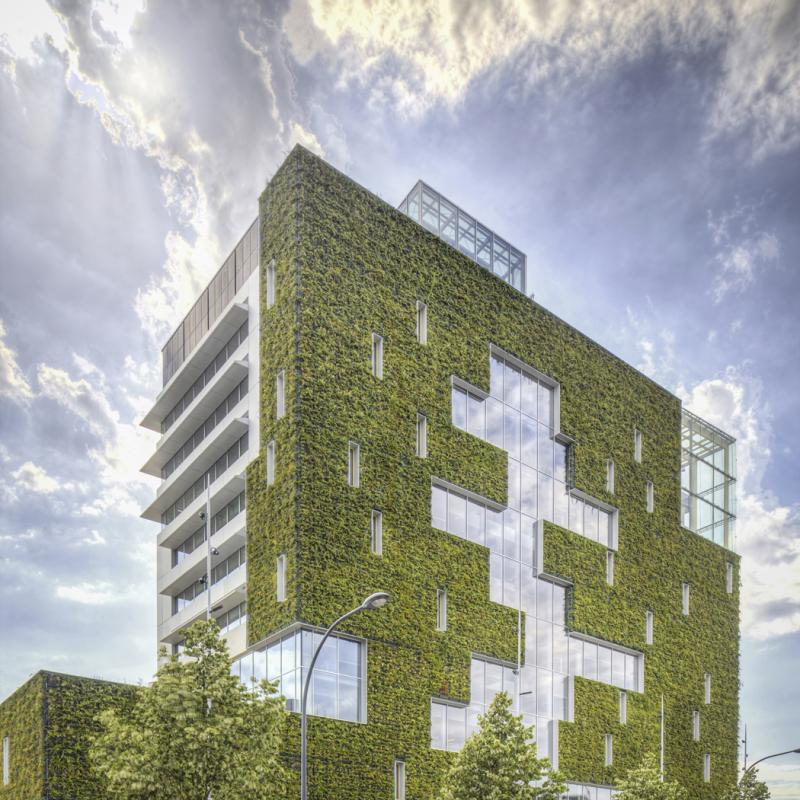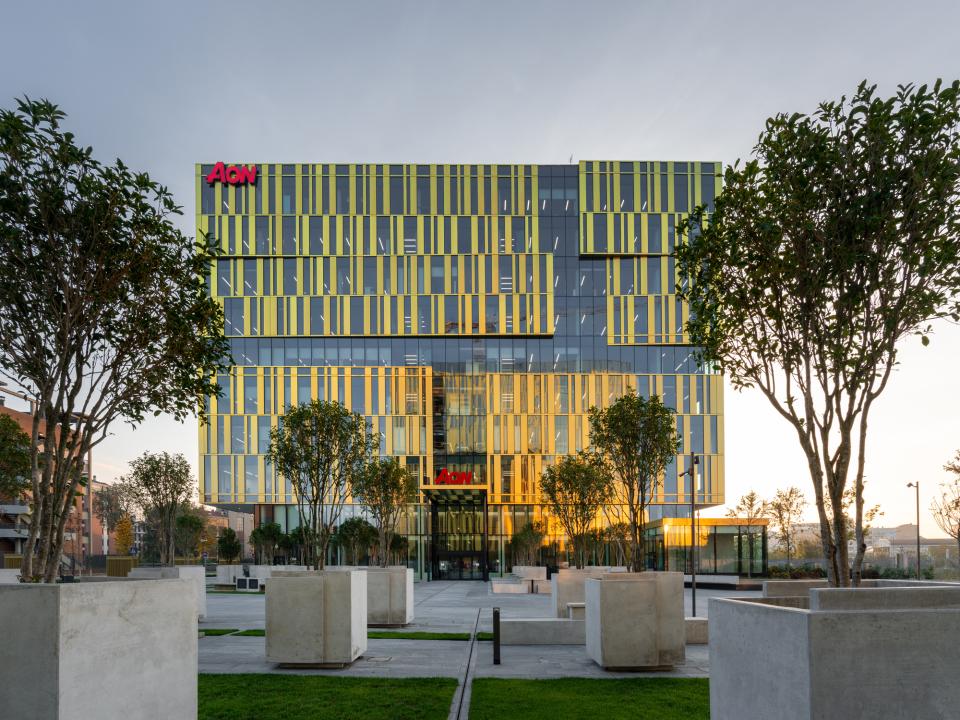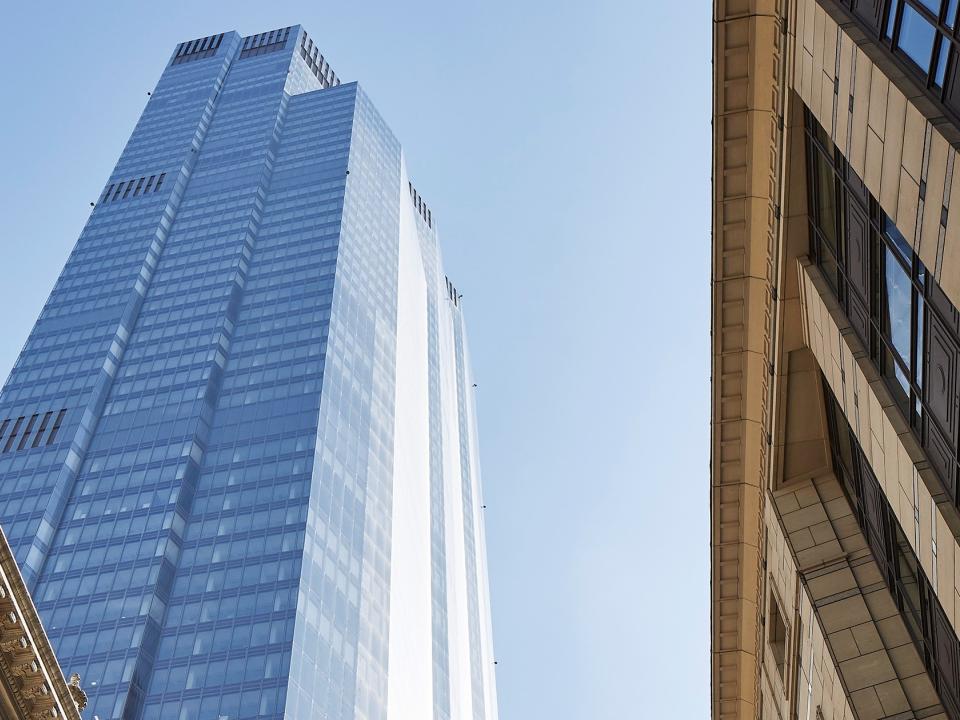The EU building industry is entering a greener era driven by four major shifts
Increasingly stringent regulations for sustainable construction: the construction sector is directly affected by legislation and policies concerning protection of the environment, health & safety, energy efficiency and social and economic quality.
The market shift towards green buildings that are becoming the new standard: investing in a non-green building will have serious financial consequences in the future. Rating systems for sustainable buildings are being introduced throughout Europe.
The rising prices of resources (e.g. gas, electricity and non-renewable natural resources) and their relative price volatility: this highlights the need to integrate energy-efficient and recyclable/recycled materials in the construction.
Increasing market awareness about sustainability: sustainable products are increasingly preferred in construction (i.e. low-carbon products or materials based on high circularity and on sound management of resources throughout the supply chain, including natural materials or materials with a longer lifetime and lower degree of processing).
Reversing climate change processes by improving the energy performance of buildings
Buildings currently account for over 40% of the European primary energy demand and 36% of Europe’s CO2 emissions.
Buildings are among the biggest consumers of energy and the largest contributors to global greenhouse emissions, ahead of transport, agriculture and industrial processes. In response the EU has set a range of energy targets for all new buildings by 2030. By improving the energy efficiency of buildings and the products used, we can reduce total EU energy consumption and help to attain long-term objectives.
Sources: EC, EU Energy Figures – “Statistical Pocket Book 2021” and Glazing Potential – Energy Savings & CO2 Emission Reduction, Glass for Europe
Source graph : Based on section “2.5.3 Final Energy Consumption BY SECTOR” in file ‘EU energy in figures - Statistical pocketbook 2021’
“A reduction of 90% in CO2 emissions from buildings will have to be achieved by 2050”
In its roadmap, the European Commission recommends that a reduction of 90% in CO2 emissions from buildings is needed in order to reach the EU’s goal of a low-carbon economy. Thanks to the available technologies for construction materials – including high-insulating glass that offers a positive energy balance – this objective is certainly feasible.
The unique energy-efficient solutions offered by flat glass products are smoothing the way towards the low-carbon economy in Europe
Glass is unique amongst building materials because of its ability to admit natural light and solar heat.
Thanks to its light transmission properties, glass can substantially reduce the energy bill, given that artificial lighting can contribute as much as 40% of a building’s total primary energy consumption (source: Carbon Trust, independent experts on carbon reduction).
Glass can help to reduce your energy consumption for heating, cooling and artificial lighting all in one
By combining advanced glass coatings and double or triple glazing, greater advantage can be taken of the insulating or solar control properties of glass.
During cold weather conditions, low-emissivity coatings help to keep the warmth inside the building while capturing the benefit of solar heat. Likewise, in warm climates solar control coatings prevent the sun’s heat from entering the building while allowing daylight to pass through the window. The room therefore stays bright but at the same time is kept cooler than the outside.
On average, 37% of the primary energy consumption of a standard building belonging to the tertiary sector in Europe comes from the heating needs. Another 19% and 18% of the primary energy demand is attributable respectively to the ventilation & IT systems and artificial lighting.
26% of the primary energy needs are equally split between the cooling systems and all other energy needs not already mentioned (e.g. to heat water, etc.). Thanks to AGC’s added-value products, we are able to directly reduce this primary energy consumption for three of these categories: heating, cooling and artificial lighting.
Last but not least, a study carried out by TNO for Glass for Europe indicates that up to 42% of the EU’s 2030 energy efficiency target could be achieved by installing high-performance glazing.
Sources:
1. TNO Built Environment and Geosciences – Glazing type distribution in the EU building stock – TNO report TNO-60-DTM-2011-00338 – February 2011. TNO Built Environment and Geosciences – Potential impact of Low-Emissivity glazing on energy and CO2 savings in Europe – TNO report 2008-D-R1240/B – November 2008) Glazing Potential – Energy Savings & CO2 Emission Reduction, Glass for Europe.
2. Glass for Europe is the trade association for Europe's manufacturers of building, automotive, and transport glass, all derived from the base material known as flat glass (http://www.glassforeurope.com)
Environment-friendly products in green building rating systems
Reversing climate change by using efficient, energy-saving building materials is one thing; lifecycle management of the multiple aspects required for sustainability is quite another. To measure these aspects, it is necessary to have various "green indices." These include the product’s recyclability level, recycled content, eco-friendliness, regional aspects, indoor air quality, life cycle impact, as well as the company’s social responsibility and responsible environmental management across the product’s supply chain. Amidst growing interest in environment-friendly products in construction, buildings are now being certified as “sustainable buildings.”
The most widely used rating systems for sustainable buildings in Europe are BREEAM (Building Research Establishment Environmental Assessment Method) and LEED (Leadership in Energy and Environmental Design). These are used to rate buildings in terms of efficient utilisation of energy, water, and other resources in order to minimise their environmental burden, including waste and pollution. The number of buildings with such certification is expected to increase significantly in the future.
The certification level is typically based on the number of credits or points awarded in the different categories.
These rating systems for buildings are now shaping the market for added-value glass products: many architects specialising in low-energy buildings are incorporating large glazed areas in their designs. Besides other advantages such as reduction in primary energy consumption, glass allows natural light to enter the building, which results in increased comfort, productivity, health and wellbeing for the occupants. These latest criteria are accounted for in the final score of the building rating systems.
AGC Glass Europe product analysis for sustainable building rating schemes
AGC Glass Europe has collaborated with third-party BREEAM and LEED certified assessors to help customers improve their certification ratings. These assessors analysed the company’s glass products to assess the number of credits or points they could contribute under the certification systems.
The results of the study show that AGC Glass Europe products can contribute to different categories of the ratings schemes, leading to a higher level of certification for the sustainable building.
Details of the contributions made by AGC Glass Europe’s glazing and interior glass solutions for BREEAM and LEED ratings can be downloaded below:
Contact sustainability@agc.com for more information concerning the contribution that our products can make to BREEAM and LEED certification. Further information on our products can be found at www.agc-yourglass.com.


